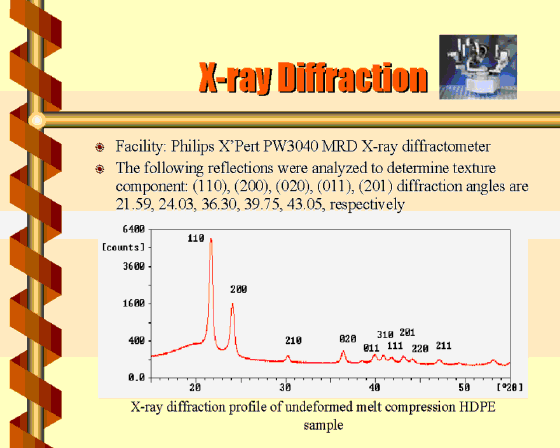

However, XRD can be time-consuming and may require large amounts of sample ( Das et al., 2014 Epp, 2016).ĭespite some limitations, XRD is widely used to determine the material structure at an atomic level. To confirm the results obtained using XRD, they may be compared with microscopy techniques or other solid-state characterization techniques.

All measurements are carried out in Angstroms (1 Å=0.1 nm or 10 −10m). The interference occurring due to scattering of X-rays with each other is observed applying Bragg’s law and a suitably positioned detector, and crystalline structure characteristics of the material are determined. A beam of X-rays is passed through the specimen and is scattered, or diffracted, by the atoms in the path of the X-rays investigated. XRD is based on the wide-angle elastic scattering and is generally used for ordered material (specifically long-range order crystalline material), and is not preferred for disordered material. XRD works on the principle of Bragg’s equation, which can be described in terms of reflection of collimated X-ray beam incidence on a crystal plane of the sample that to be characterized. The use of XRD in pharmaceutical research is extensively increasing due to its wide application. X-ray diffraction (XRD) is used for the primary characterization of material properties like crystal structure, crystallite size, and strain.

Tekade, in Basic Fundamentals of Drug Delivery, 2019 10.3.5 X-Ray Diffraction for Structural Analysis


 0 kommentar(er)
0 kommentar(er)
